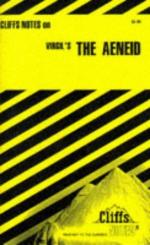|
This section contains 395 words (approx. 2 pages at 300 words per page) |
World of Scientific Discovery on Richard J. Roberts
Richard John Roberts was born in 1943, in Derby, England. His father, John Roberts, was a motor mechanic, while his mother, Edna (Allsop) Roberts, took care of the family and served as Richard's first tutor. After graduating with honors in 1965, Roberts remained at Sheffield University to study for his doctoral degree under David Ollis, his undergraduate professor of organic chemistry. After becoming interested in molecular biology, he moved to Harvard University in 1969, where he spent the next four years deciphering the sequence of nucleotides in a form of ribonucleic acid known as tRNA. Using a new method devised by English biochemist Frederick Sanger at Cambridge, he was able to sequence the RNA molecule, while teaching other scientists Sanger's technique. His creative work with tRNA led an invitation by genetic pioneer and Nobel laureate, James Watson, to join his laboratory in Cold Spring Harbor, Long Island, New York.
In 1972, Roberts moved to Long Island to research ways to sequence DNA. American microbiologists Daniel Nathans and Hamilton Smith had shown that a restriction enzyme, Endonuclease R, could split DNA into specific segments. Roberts thought that such small segments could be used for DNA sequencing and began looking for other new restriction enzymes to expand the repertoire. (Enzymes are complex proteins that catalyze specific biochemical reactions.) In 1977, he developed a series of biological experiments to "map" the location of various genes in adenovirus and found that one end of a messenger ribonucleic acid (mRNA) did not react as expected. With the use of an electron microscope, Roberts and his colleagues observed that genes could be present in several, well-separated DNA segments.
In 1986, Roberts married his second wife, Jean. He left Cold Spring Harbor and moved back to Massachusetts in 1992 to join New England Biolabs, a small, private company involved in making research reagents, particularly restriction enzymes. His title is joint research director. In 1993, Roberts was awarded the Nobel Prize for his discovery of "split genes." The Nobel Committee stated that, "The discovery of split genes has been of fundamental importance for today's basic research in biology, as well as for more medically oriented research concerning the development of cancer and other diseases."
In 1995, Roberts was in the news again when he received a letter bomb from the radical known as "the Unabomber." The professor escaped injury. Roberts continues his research at New England BioLabs, Inc., as of 2001.
|
This section contains 395 words (approx. 2 pages at 300 words per page) |


